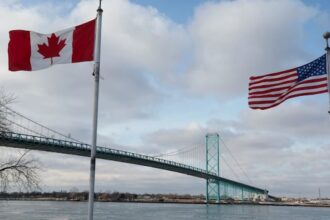In a landmark development that could reshape Canada’s internal economic landscape, Ontario and British Columbia have forged new agreements aimed at dismantling trade barriers between provinces, potentially unlocking billions in economic growth. The announcement, made jointly by provincial leaders on Thursday, represents the most significant advancement in interprovincial commerce since the Canadian Free Trade Agreement was established in 2017.
“What we’re witnessing today is a fundamental shift in how provinces approach internal trade,” said Ontario Premier Doug Ford at the signing ceremony in Toronto. “For too long, Canadians have faced unnecessary obstacles when doing business across provincial boundaries. Today, we begin changing that narrative.”
The new bilateral agreements target key economic sectors including construction, professional services, and agriculture, with provisions to streamline regulatory processes, eliminate duplicative certification requirements, and harmonize standards across provincial lines. Economic analysts estimate these measures could add up to $4.7 billion annually to Canada’s GDP once fully implemented.
British Columbia Premier David Eby emphasized that the agreement goes beyond symbolic gestures. “This isn’t about handshakes and photo opportunities. We’ve committed to concrete steps with clear timelines and accountability measures to ensure these barriers actually come down,” Eby stated during the joint press conference.
The Yukon, Northwest Territories, and Nunavut have also signed complementary agreements, marking the first time territorial governments have been full participants in such comprehensive trade negotiations rather than secondary signatories.
The agreements include several groundbreaking provisions, most notably a “regulatory recognition principle” whereby any business product or service that meets regulations in one participating province will automatically be recognized as compliant in other signatory jurisdictions. This could eliminate months of redundant paperwork and testing previously required for cross-provincial commerce.
Canada’s internal trade barriers have long been criticized by economists and business leaders. A 2019 study from the International Monetary Fund estimated that eliminating these barriers could increase Canada’s per-capita GDP by nearly 4 percent—a more significant boost than many international trade agreements have delivered.
Federal Minister of Innovation, Science and Industry François-Philippe Champagne called the agreements “a critical step toward creating a truly unified Canadian economic space,” while noting that the federal government is prepared to offer technical and administrative support to ensure successful implementation.
Not all provinces have joined the initiative, however. Quebec and Alberta have expressed reservations about certain provisions, particularly those concerning professional certification and energy sector regulations, respectively. Negotiations continue with the remaining provinces, with Saskatchewan and Manitoba reportedly close to finalizing terms.
Business groups across the country have strongly endorsed the agreements. “This represents the most important economic reform within Canada in decades,” said Perrin Beatty, President of the Canadian Chamber of Commerce. “Internal trade barriers have been the silent growth killer in our economy for generations.”
Implementation will occur in phases over the next three years, with the first set of regulatory harmonization measures taking effect in January 2024. A newly established Interprovincial Trade Secretariat will monitor compliance and resolve disputes that arise during implementation.
As Canada navigates economic uncertainties in global markets, the question remains: could this new internal trade framework finally deliver on the long-promised economic integration that has eluded the federation since Confederation, or will provincial interests ultimately preserve the status quo that has fragmented our national marketplace for generations?
Learn more about Canadian politics and follow developments in Canada news for ongoing coverage of this evolving story.
























